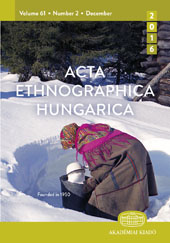Unique Haban Wares from the Castle of Regéc
Unique Haban Wares from the Castle of Regéc
Author(s): Zsuzsa Eszter PetöSubject(s): Archaeology, Architecture, Visual Arts, Ethnohistory, Middle Ages, Cultural Anthropology / Ethnology
Published by: Akadémiai Kiadó
Keywords: Haban floor brick; Haban plate; Haban workshops; historical archaeology; post-mediaeval Hungary; Haban pottery production; comparative analysis; Rákóczi family; Alaghy family;
Summary/Abstract: The Castle of Regéc, located in what is today Northeastern Hungary, is one of the largest fortresses built at the turn of the 13th and 14th century. The fortified castle has a complex history; in the post-mediaeval era, several noble and aristocratic families owned it (among others, the Alaghy, Mágóchy, Esterházy, and Rákóczi families). As the Haban wares became increasingly popular in the 17th century in the western, northeastern, and eastern areas of the Carpathian Basin, this type of ceramic can be found at Regéc as well. Besides the numerous small potsherds and stove tiles, a plate and many fragments of a unique type of floor brick have been excavated. The latter two objects were selected for the present study, which will perhaps show that besides the traditional art historical analysis of ceramics stored in museums or private collections, it is just as important to make comparative studies to evaluate the historical archaeological material. The present study gives an introduction to the selected material. The Haban plate, dated to 1659 by its inscription, is a unique piece; similar types can be found in some collections. The type of decorated floor bricks is possibly the only identified masterpiece of Haban craftsmen among those that have been found in the region.
Journal: Acta Ethnographica Hungarica
- Issue Year: 60/2015
- Issue No: 2
- Page Range: 445-461
- Page Count: 17
- Language: English
- Content File-PDF

